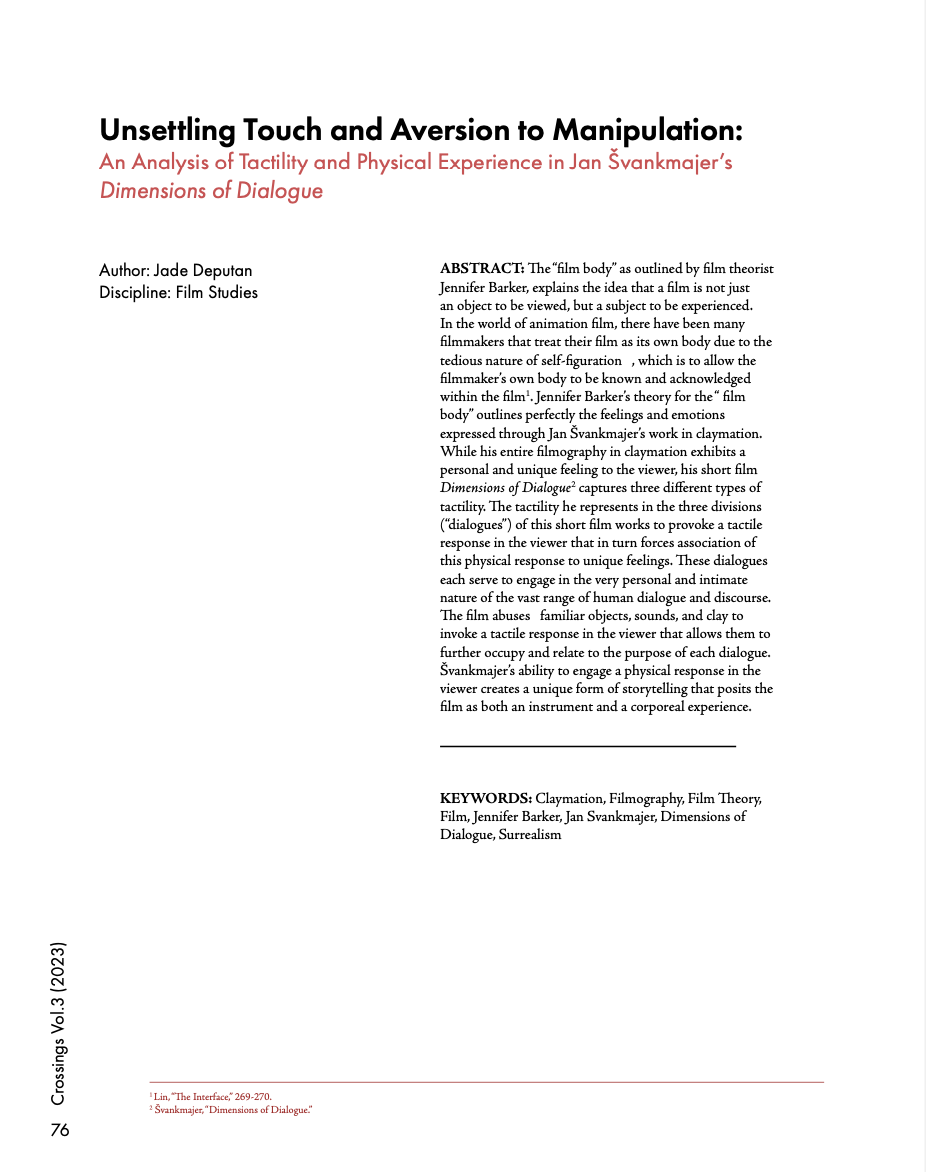Unsettling Touch and Aversion to Manipulation
An Analysis of Tactility and Physical Experience in Jan Švankmajer’s Dimensions of Dialogue
DOI:
https://doi.org/10.29173/crossings130Keywords:
Film, Claymation, Film Theory, Flimography, Jennifer Barker, Dimensions of Dialogue, Surrealism, Jan SvankmajerAbstract
The ‘film body’ as outlined by film theorist Jennifer Barker, explains the idea that a film is not just an object to be viewed, but a subject to be experienced. In the world of animation film, there have been many filmmakers that treat their film as its own body due to the tedious nature of self-figuration. Jennifer Barker’s theory for the ‘film body’ outlines perfectly the feelings and emotions expressed through Jan Švankmajer’s work in claymation. While his entire filmography in claymation exhibits a personal and unique feeling to the viewer, his short film Dimensions of Dialogue captures three different types of tactility. The tactility he represents in the three divisions (‘dialogues’) of this short film works to provoke a tactile response in the viewer that in turn forces the association of this physical response to unique feelings. These dialogues each serve a purpose to engage in the very personal and intimate nature of the vast range of human dialogue and discourse. The film abuses familiar objects, sounds, and clay to invoke a tactile response in the viewer that allows them to further occupy and relate to the purpose of each dialogue. Švankmajer’s ability to engage a physical response in the viewer created a unique form of storytelling that posits the film as both an instrument and a corporeal experience.

Downloads
Published
Issue
Section
License
Copyright (c) 2023 Jade Deputan

This work is licensed under a Creative Commons Attribution 4.0 International License.

